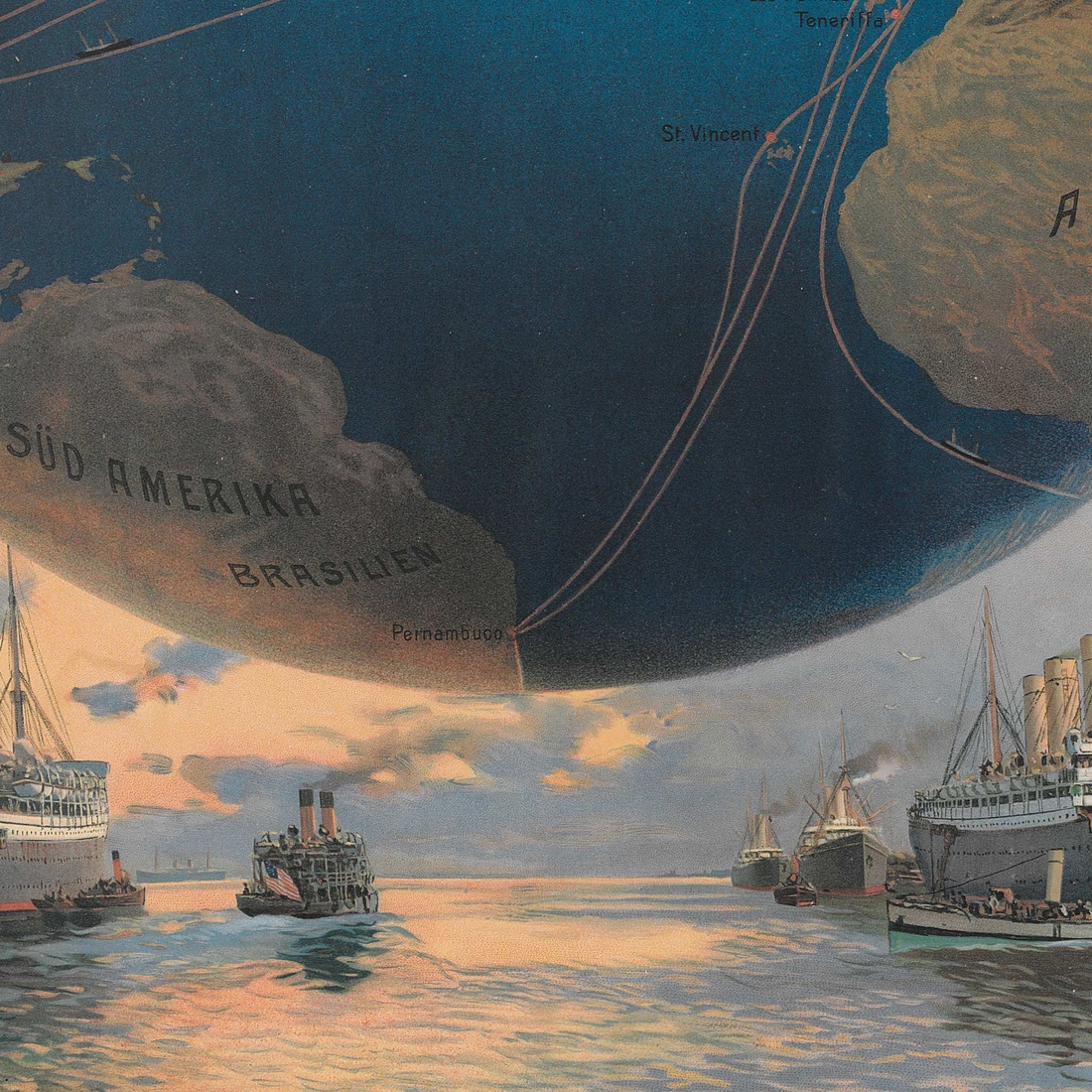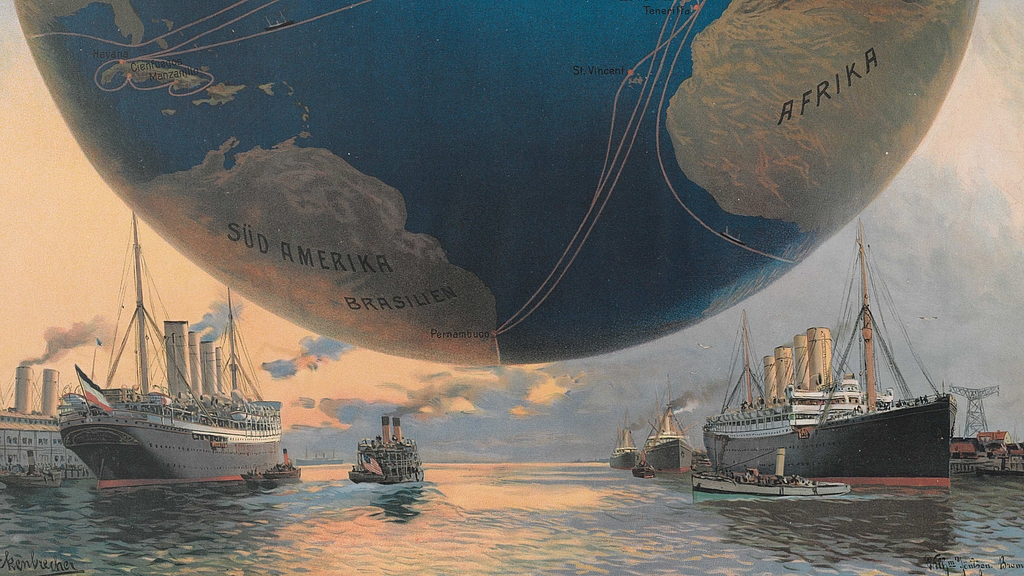Civil and military shipping
Around 1900, the first phase of globalization began, the world grew together. This was largely due to civil and military shipping, which at that time were working closely together
In addition to the invention of the railway and telegraph, it was above all technical developments in shipbuilding that enabled the world to enter an age of increasing economic, political and cultural interdependence at the end of the 19th century. An increasing number of people were able to travel across the world's oceans by steamship, safer and faster than ever before. Spatial distances were easier to overcome, the perception of space and time changed. At the same time, however, this first phase of globalization was also closely related to the imperial and power-political interests of the Western world. Taking the German Empire as an example, the exhibition area "Civil and Military Shipping in the Age of Increasing Global Interdependence (1870-1914)" shows how closely civil and military shipping were connected with these interests.
From the German Empire out into the world
Emperor Wilhelm II wanted to build Germany into a great power at sea and extend the German sphere of influence overseas in political, economic and cultural terms. To this end, the acquisition of colonial property was to be promoted and civil and military shipping expanded. Politicians supported the German shipyards and shipping companies. Hamburg-Amerika Linie (HAPAG) in Hamburg and Norddeutsche Lloyd (NDL) in Bremen built ever larger passenger ships, with which the German Empire entered into a race with other nations for the fastest Atlantic crossing. As symbols of national greatness, the steamers transported countless passengers from the I. to the III. class to overseas and back. Warships were dispatched to protect and secure the sea routes and the colonial interests of Germany. The state-subsidised Reichspostdampfer provided regular connections across the world's oceans, thus strengthening economic and trade relations. The close intertwining of civil and military shipping also took place at a lower level in a very practical way. Cargo and passenger ships transported soldiers and navy personnel from Germany to overseas. In our new exhibition, we want to show what global interests were connected with shipping and how these interests continue to have an impact to this day.
Further reading
Sebastian Conrad und Jürgen Osterhammel (Hrsg.):
Das Kaiserreich transnational. Deutschland in der Welt 1871–1914,
2. Aufl. Göttingen 2006
Hartmut Klüver und Peter Hammer (Hrsg.):
Das Zusammenwirken von Handelsschiffen und Seestreitkräften in Deutschland (Beiträge zur Schiffahrtsgeschichte, Bd. 11),
Düsseldorf 2005
Jürgen Osterhammel und Niels P. Petersson:
Geschichte der Globalisierung. Dimensionen, Prozesse, Epochen,
5. durchgesehene Aufl. München 2012
Volker Plagemann (Hrsg.):
Übersee. Seefahrt und Seemacht im deutschen Kaiserreich,
München 1988


